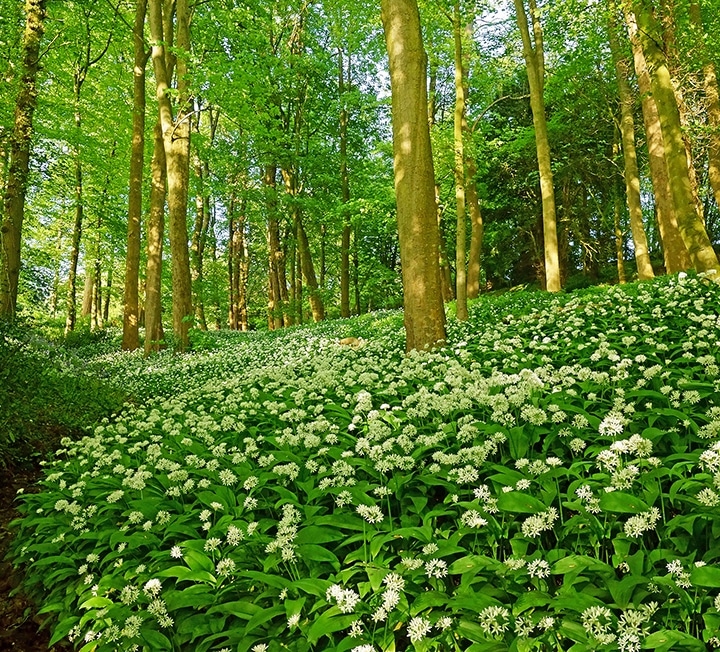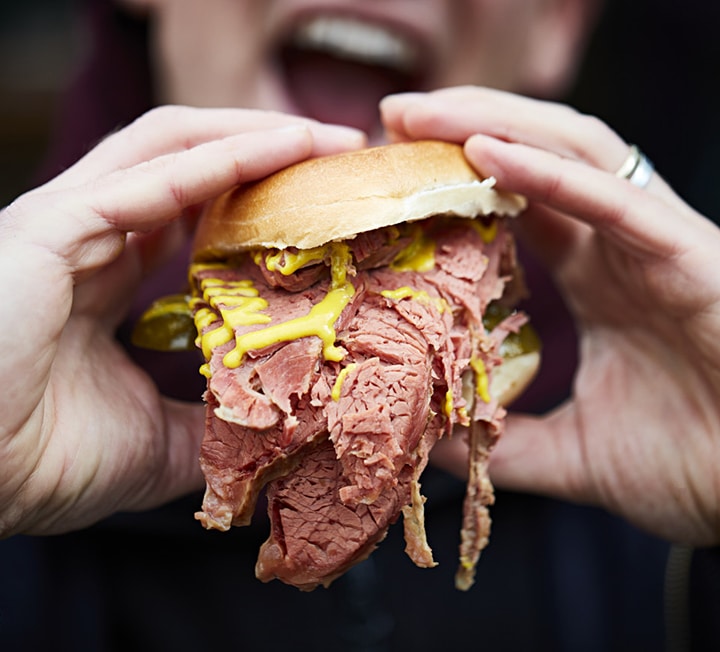What it takes: foraging
Noel Fitzjohn of Fitz Fine Foods on location-spotting, constant vigilance and the menace of dogs


“LOCATION IS EVERYTHING. IF YOU WANT THE BEST PRODUCE, YOU NEED A LOCATION WITH THE IDEAL CONDITIONS FOR THE PLANT”
Interview: Viel Richardson
How did you come to be a professional forager?
When I started Fitz Fine Foods, foraging was never meant to be a major part of the business. We were making mostly pâtés and terrines, and I wanted to ensure that the ingredients we were using came from people whose methods were environmentally sensitive and sustainable. I had been foraging for myself for years, and some of that produce occasionally made it into my products. When I analysed what people were buying, the two most popular areas were our small selection of mustards and anything based on foraged plants. I decided to find a way to combine the two. That led to a range of flavoured mustards using foraged goods.
What is the key to being a successful forager?
Location is everything. If you want the best quality produce, you need to find a location with the ideal conditions for the plant. Plants can often gain a foothold in less than ideal places, but they will not be at their best, so you need to know and understand the environments in which they really flourish. Another big issue is dogs: if you forage in areas favoured by dog walkers, it is inevitable that your favourite patch will one day be used as a dog latrine. Essentially, any public land where dogs are common is off limits, so I mainly forage on private land.
Is that legal?
The laws around trespass and foraging have some grey areas, but from my perspective one thing is crystal clear: if you forage on private land for commercial purposes, you have to obtain the landowner’s permission. Tracking down the owner of a piece of land can be tricky, but it is absolutely essential. One place I go, which produces really wonderful wild garlic, is a private wood used for timber; the wild garlic plant is so out of control that it’s actually a real problem for the owner, so he lets me take as much as I need.
How laborious is foraging?
Anyone who has harvested plants commercially by hand will tell you it is hard work. If we take wild garlic as an example, I will gather for about three hours. That sounds a lot, but the idea is to never clear too large a patch. If you do, other plants like dog’s mercury and cuckoo-pint may colonise the area, crowding out everything else. I will clear a patch about two metres square and then move somewhere else – that way the wild garlic can recover. It is all about preserving the resource. You also have to be very observant and inspect the leaves as you harvest – while you’re not picking the leaves individually, you are glancing at each one.
What happens to the wild garlic once picked?
I wash the leaves in a large vat before inspecting them again. I then lay the leaves out to dry, before inspecting them a third time. I just want to make sure nothing else has crept in. After that, if I am going to make a mustard, I blanch the leaves like spinach; if it is for a pesto or for sale as leaves, it is left raw.
This all seems very time consuming.
Very much so. If you want to do it well, it has to be. That means that I cannot do all the foraging myself, so I do have to buy in produce from other foragers. If you’re going to stock produce that people want, you have to be able to offer it to them most of the time. They will forgive an occasional absence, but to build a stable customer base you have to offer some consistency. This is particularly relevant to me, as I make all the mustards myself, so I simply do not have the time to seek out locations, then forage and process everything I need.

How do you pick suppliers?
You do your research and assess the produce they offer. You really need to know how they operate. To give one example, some samphire pickers are paid by weight, while others are paid on quality. Lower quality, older samphire has wooden stalks in the centre, making it heavier – so if you’re paid by weight, there’s an incentive to pick the lower quality plant. You also need to make sure the suppliers are foraging sustainably. Luckily there are some very good companies out there. It is this mix of self-foraged and carefully bought produce that allows me to consistently offer high quality products.
Where do you get your recipes?
Most of them I create myself through experimentation – trial and error. To get the wild garlic pesto recipe nailed down took about three seasons of honing. There are some happy accidents. One day, some chopped-up wild garlic was left in a pot with some honey by mistake. I found it after a while, tasted it and thought it was quite nice, so tweaked the amounts and made some experimental batches – that is now a product. It turns out it takes quite some time to mature – the longer you leave it, the better it gets. If I had tried it straight away, it would have gone in the bin.
What foraged produce will be appearing as spring unfolds?
As you would expect, this is a time when a lot changes – and it can also be very unpredictable, depending on the vagaries of the weather. As our weather gets more unpredictable, you will often find things that the ‘books’ say are out of season. With the wild mushrooms, I’ll be harvesting St George’s, chicken of the woods and the scarlet elf cap, which is a really beautiful, bright red mushroom. Three cornered leeks should be making an appearance, as well as wild asparagus, marjoram and wild alexanders.


